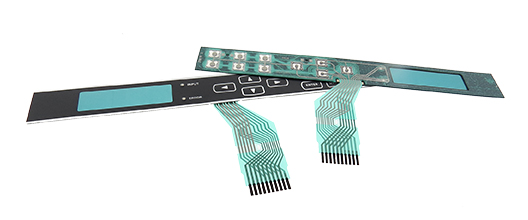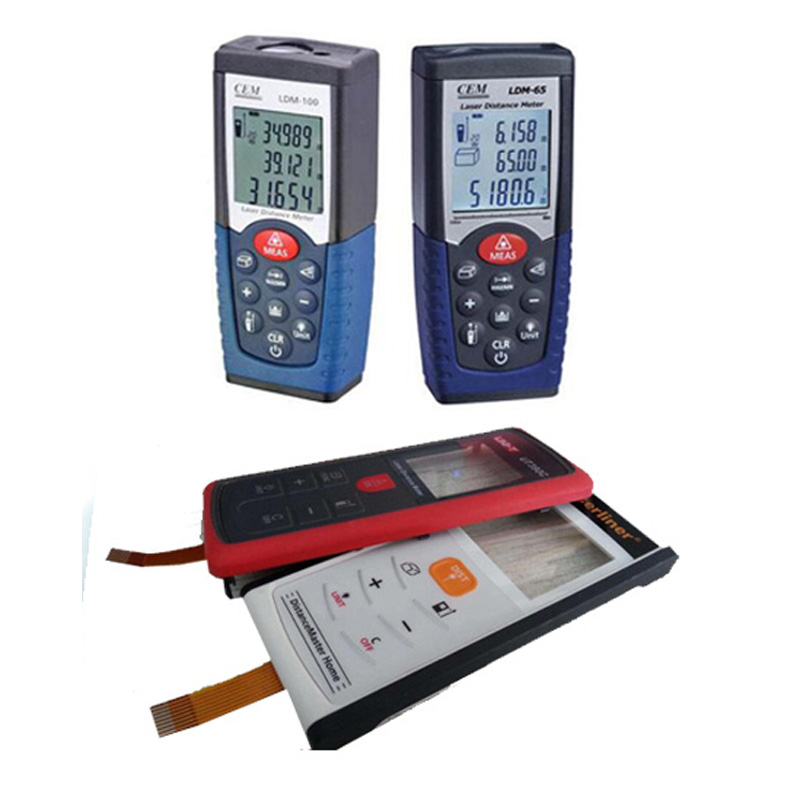Everything About Membrane Switch Over: A Comprehensive Guide for Beginners
Membrane layer switches are important parts in contemporary electronics, using a special interface for customer interaction - membrane switch. Their split construction, consisting of overlays and conductive traces, offers capability and toughness. Unlike typical mechanical buttons, membrane switches offer a sleek layout and customizable alternatives. Understanding their crucial features and benefits can change product style. Nonetheless, the complexities of their application and layout considerations call for more exploration
What Is a Membrane Change?
A membrane layer button is a kind of electric switch that includes an adaptable membrane layered over a published motherboard. This design permits a streamlined and compact user interface, often used in various digital tools. Membrane layer buttons are commonly found in consumer home appliances, clinical tools, and commercial equipment as a result of their longevity and resistance to environmental factors.The building normally consists of numerous layers, such as visuals overlays and glue support, which give responsive responses and protect the circuitry underneath. The operation of a membrane switch is initiated when pressure is used to the surface area, finishing an electric circuit.These buttons are valued for their convenience, making it possible for personalized layouts and printed graphics that satisfy specific user interfaces. Their inconspicuous nature lowers room needs, making them excellent for applications where typical buttons may not fit. In general, membrane buttons supply a useful and visual option for modern-day electronic tools.
Key Parts of Membrane Layer Switches
Membrane layer changes comprise several vital elements that contribute to their functionality and efficiency. The top layer, called the overlay, provides the customer interface and is commonly printed with graphics or symbols. Below the overlay lies a spacer layer, which divides the conductive aspects and prevents unintended activation. The next essential element is the graphic layer, which improves looks and guarantees the durability of the design.Conductive traces, commonly made from materials like silver or carbon, are published on the circuit layer. When pressure is put on the overlay, these traces enter call, completing the circuit. In addition, a backing layer provides architectural support and can be made from products such as polyester or polycarbonate. Together, these elements create a trustworthy, user-friendly user interface suitable for different applications, from house home appliances to commercial equipment. Comprehending these elements is vital for anyone thinking about membrane layer switch innovation.
Just How Membrane Changes Job
Understanding exactly how membrane switches function is crucial for appreciating their extensive usage in numerous tools. A membrane button operates with a collection of layers, consisting of a graphic overlay, spacer, and a circuit layer. When pressure is put on the overlay, it presses the spacer layer, permitting the circuit layer to make contact and complete an electrical circuit. This action sends a signal to the gadget, triggering a response, such as turning on a light or activating a function.Membrane switches can be made with numerous features, consisting of tactile comments, backlighting, and custom graphics, enhancing user communication. Their building enables a closed design, safeguarding the inner elements from dirt, moisture, and pollutants. This sturdiness makes them suitable for diverse applications, from customer electronic devices to industrial devices. Generally, the simpleness and effectiveness of membrane layer switches add to their appeal in contemporary innovation.
Benefits of Membrane Layer Switches Mechanical Buttons
While mechanical switches have long been a staple in numerous devices, membrane layer changes offer distinct advantages that make them progressively appealing. One substantial advantage is their slim account, enabling even more compact designs and higher adaptability in item development. Additionally, membrane switches attribute a consistent surface area, which enhances aesthetic charm and streamlines cleansing, making them ideal for atmospheres where health is critical.Another advantage is their resistance to dirt and dampness. Unlike mechanical switches, which can be endangered by ecological factors, membrane switches give a covered user interface that protects against pollutants - membrane switch. Membrane layer switches commonly have a longer life expectancy due to less relocating parts, resulting in enhanced toughness and reliability.Cost-effectiveness is also a notable advantage, as membrane layer buttons can be produced in bulk with reduced manufacturing expenses. These elements combine to place membrane layer buttons as a practical alternative to standard mechanical options in numerous applications
Usual Applications of Membrane Switches
Membrane switches are widely made use of in numerous sectors, particularly in customer electronics and commercial control panels. In customer tools, they offer a streamlined, easy to use interface, while in commercial settings, they improve durability and performance. Recognizing these applications look at these guys highlights the flexibility and functionality of membrane layer switches in modern technology.
Customer Electronics Devices
As consumer electronic devices remain to advance, membrane layer switches have become a popular choice for a range of gadgets due to their adaptability and smooth layout. These buttons are generally discovered in smart devices, tablets, and remote controls, where area is restricted and aesthetics issue. Their low account and customizable designs permit makers to create user-friendly interfaces that boost the overall individual experience. Furthermore, membrane layer buttons are usually utilized in home appliances such as microwaves and coffee makers, supplying intuitive control alternatives while withstanding moisture and dust. The toughness and reliability of membrane changes make them suitable for day-to-day consumer items, guaranteeing longevity and constant efficiency. On the whole, their integration in consumer electronic devices reflects a blend of functionality and modern-day style.
Industrial Control Panels
The applications of membrane switches extend beyond customer electronic devices, finding considerable usage in industrial control board. These buttons are favored for their longevity and resistance to extreme settings, making them suitable for making and procedure control settings. They offer a trusted user interface for drivers to regulate equipment, display processes, and adjust setups. Membrane switches can be personalized to suit certain operational needs, incorporating functions like backlighting and tactile comments, improving user experience. Their low-profile design enables combination into different tools, while their ability to hold up against spills, dust, and extreme temperatures warranties longevity. Generally, membrane buttons add to reliable and safe operation in commercial applications, demonstrating their adaptability and efficiency popular environments.
Considerations for Creating Membrane Changes
When designing membrane buttons, selecting the ideal materials is necessary to guarantee toughness and performance. In addition, understanding layer configuration methods can significantly impact the button's efficiency and customer experience. These factors to consider play a vital duty in producing efficient and trusted membrane switch designs.
Material Choice Significance
Material option plays an essential function in the style and functionality of membrane layer buttons. The chosen products directly influence the button's durability, tactile response, and general aesthetic. Secret considerations include the substratum, which have to provide structural integrity while enabling versatility, and the graphic overlay, which needs to be resistant to put on and ecological variables. Conductive products need to assure reliable electric efficiency, while adhesives need to provide strong bonding without compromising the button's operation. Additionally, compatibility with producing procedures and end-user settings is vital; materials should hold up against varying temperature levels, humidity levels, and chemical direct exposure. Ultimately, ideal material option not only enhances the membrane layer button's performance yet additionally contributes to its durability and user fulfillment, making it an essential element of the design process.

Layer Setup Methods

Frequently Asked Questions
How Much Time Do Membrane Layer Changes Usually Last?
Membrane buttons normally have a life-span of 1 to 5 million cycles, relying on usage and environmental problems. Aspects such as design top quality and operating frequency greatly affect their toughness and total efficiency long life.

Can Membrane Switches Over Be Customized for Details Styles?
Membrane layer switches can undoubtedly be personalized to accommodate details layouts, permitting diverse forms, shades, and functionalities. This adaptability enables producers to tailor these switches to fulfill one-of-a-kind visual and functional requirements successfully.
What Materials Are Used in Membrane Change Building?
Membrane layer switches are generally created using materials site here such as polyester, polycarbonate, and sticky layers. These materials provide versatility, resilience, and resistance to ecological variables, ensuring the buttons function properly in various applications and problems.
Are Membrane Layer Switches Resistant or water-proof to Moisture?
Membrane buttons can be made to be moisture-resistant, utilizing specialized coverings and products. Their water resistant abilities depend on construction top quality and particular applications, making it crucial to examine requirements for excellent efficiency in numerous settings.
How Are Membrane Switches Over Repaired if Harmed?
Fixing damaged membrane layer switches over usually involves replacing the influenced layer or circuit. Service technicians might also use conductive glue or utilize specialized repair packages, guaranteeing performance is restored without full replacement of the entire button assembly. Unlike conventional mechanical switches, membrane buttons offer a smooth layout and adjustable options. A membrane button is a kind of electrical button that is composed of an adaptable membrane layered over a printed circuit board. The procedure of a membrane button is launched when pressure is used to the surface area, completing an electric circuit.These switches are valued for their convenience, allowing custom layouts and printed graphics that provide to specific customer interfaces. While mechanical switches have actually long been a staple in many gadgets, membrane changes deal unique benefits that make them increasingly appealing. Membrane layer switches normally have a longer lifespan due to fewer relocating parts, resulting in improved durability and reliability.Cost-effectiveness is likewise a remarkable benefit, as membrane layer buttons can be produced in mass with reduced manufacturing prices.